HOME | NOTES | INGREDIENTS | SEAFOOD | PORK | CHICKEN | BEEF | MUTTON | RICE & BREAD | NOODLES | VEGETABLES | DESSERTS | CONTACT | LINKS
![]()
April 13 2013 - October 22 2013
On this page: Asian Food and Preparation | Tips and Tricks part 2 | Tips and Tricks | Experimental Cooking | Asian Veggies | Coconut Cream | Okra | Blanching tip | Throw Another Shrimp on the Barbie | Catch it ,m Grow it, Cook it | Bi-Carb and Meat | Malaysia and Food | Using Prawns to Flavour Dishes
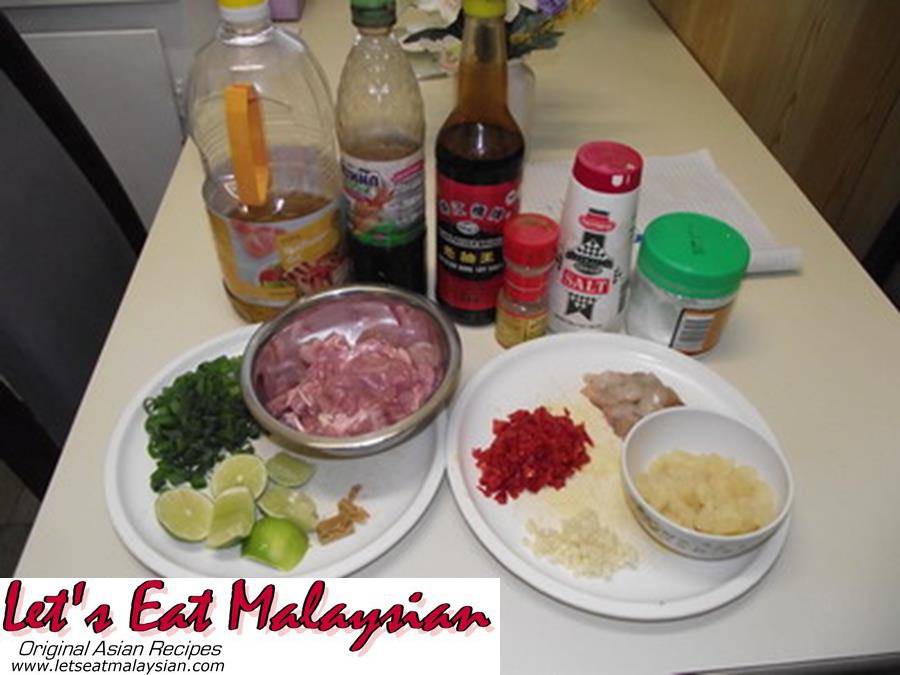
Many people
enjoy eating Asian food but when it comes to cooking it themselves they can
be a bit intimidated. As a Chinese Malaysian I grew up with the flavours of
the east and have been cooking since I was just 11 years old.
Asian cooking isn't really all that difficult. There are certainly many
different styles across Asia but with almost all of them the secret to
success is preparation.
Before I start to cook I make sure all my ingredients are laid out and all
have been pre-processed where necessary. This means if I am using chopped
prawns in a dish I will have peeled them, cleaned them, cut them up and
added a small amount of sugar. Only once all the ingredients are laid out do
I light the gas and start to cook.
Things start to go wrong during the cooking of a dish when you discover half
way through that one of the vital ingredients is still in the fridge or
cupboard and you have to start searching for it while the dish overcooks or
even worse, burns!
There are a few techniques that help getting various dishes correct and
these include making sure the temperature of the pan is right for the dish.
It is useless to try and stir fry on low heat and equally hopeless to cook a
curry on high heat. Some dishes require that you monitor and change heat
levels as you go.
The best tip I can give to anyone who likes to cook or wants to learn to
cook, is add your ingredients (especially salt, sugar and spices) slowly and
taste as you go. It is possible to use salt and sugar to balance each other
to a degree but once you overdo one or the other then the dish is ruined.
Learn the basics first and once you start to gain a bit of confidence about
what flavours work together, then start to experiment a bit. This is where
you can experience the real joy of cooking. When you start to create
successful dishes of your own without reference to any recipe books then you
can take great pride in your achievements.
On the subject of recipes I should say that, unless you are a real beginner
and are in danger of 'burning water', then you don't always need to follow
the exact quantities that recipes give. A recipe is just an idea. As a cook
it is your job to expand and improve on the original or to make the dish
suited to your own particular taste.
If you like spicy food then you can add extra chillies, if you like it less
salty reduce the salt. There are so many different ways to influence the
finished dish.
If you love good food like I do, then you are probably one of the lucky ones
who loves cooking and does not look on it as a chore. If you enjoy cooking
then chances are that your food will almost always taste great.
Updated April 11th 2013
Tips and Tricks part 2
Although fresh food is always best, there are times when you want to keep some items of food, either because you have found a good special in the shops or you have grown a good crop at home.
If you like chillies you can de-seed them, chop them in a food processor and then freeze them in an air tight container.
If you want chilli flavour but aren't one of those people who can handle chilli heat then add some capsicum. This gives a great flavour without making the dish too hot and spicy.
Prawns can be stored in the freezer for up to three months if you freeze them in water that has had a teaspoon of sugar added to it.
Things like fresh lemon and lime juice can easily be stored in the freezer in ready to use portions by freezing the juice in ice cube trays that have a lid.
Updated April 7th 2013
There are quite a few things to learn about cooking and not all of them can be found in cooking books. My Mum taught me a lot of little tricks that help in getting dishes right.
Tip number one concerns working out when the cooking oil is hot enough to deep fry in. Some people will put a piece of food in but this means it might get too oily if the oil is not at the correct temperature or it might burn if you have waited too long and the oil is overheated. The best way to work out if the oil is just right is to use a wooden chop stick. If the end of the chop stick starts to bubble then the oil is hot enough to start frying with.
Tip two concerns steaming fish. First heat some cooking oil (about 3-4 tablespoons) and add some ingredients like garlic, ginger, soya sauce and sugar. While the oil is still hot pour it over the raw fish then steam the fish. This adds flavour and helps prevent loss of moisture from the fish.
The third tip for today also concerns fish. When you are steaming the fish you can tell if it is ready by checking the eye ball of the fish. When the eye ball of the fish turns turns white the fish should be ready. If you are cooking whole fish the meat closest to the bones should still be a bit sticky. If the flesh of the fish is too flaky then it is ovcercooked.
Updated April 6th 2013
If you love good food then you may also be one of the lucky people who also love to cook. A lot of people see cooking as a chore, a task that has to be done each day without any sense of joy or adventure. Happily I am one of the lucky ones. I LOVE food and I also LOVE to cook.
Cooking to me is a daily adventure. When you get used to using certain ingredients, you start to get an idea of which flavours work together and which ones don't. Even if I am cooking the same dish for the 20th or 30th time, there is always a little room for improvisation and a bit of creative meddling.
There are times when I decide to create something I have never tried before. To mix a few flavours that I THINK might belong together but that I have never tasted in a particular combination. This is when cooking gets exciting!
I rarely follow cooking books, I may read some recipes and get some ideas from them but to sit and follow a recipe written down step by step, gram by gram, just isn't my style at all.
Recipes will only teach you so much about cooking. You can get the basics but to move on and become an adventurous cook you have to start to change things. This involves a bit of bravery and from time to time the odd failure but it is through our failures that we really learn.
Once you have an idea of what sort of flavours work together you can try a bit of mixing and matching. The most important thing to remember in all cooking is to taste as you go. Never use too much of any one ingredient without tasting as you add it. My three top rules for a successful dish are; taste, taste, TASTE!
If on occasion you end up with a dish that is a little too salty you can correct this to some extent by adding a little sugar. Likewise you can add salt if a dish is too sweet. Always add anything with great care and taste as you go.
You can check out one of my experimental successes here.
Updated April 5th 2013
Asian vegetables are getting more and more popular in Australia and as they do more shops are stocking them. Sometimes though, there are varieties that are still difficult to get from stores. If you have room for a small veggie patch it is very rewarding to grow some of the more unusual vegetables and use them in your Asian meals.
We have been growing our own vegetables for about three years now and have found the more common vegetables like pak choy, choi sum, siew pak choy, tatsoi, chillies etc. are all very easy to grow and are very productive. The great benefit of growing these veggies is that you know exactly what has gone into them before you eat them.
All the varieties mentioned above self-seed so collecting seeds for the next year is easy. Apart from the easy to grow plants we have also tried a few of the more obscure vegetables. I have already mentioned okra below but there are also plants like the hairy gourd (also called Chinese gourd and fuzzy gourd) that is pictured above.
Other types that I think are worth growing include head mustard, Kohlrabi, Vietnamese mint, lemon grass, water convolvulus (kang kong) and kaffir lime.
We have made notes on each of these veggies plus all the other types we have tried out and you can see the details of all of them on our veggie garden page if you are thinking about trying some out.
Many of the more unusual varieties are not available as seeds in the usual outlets for vegetable seeds but we have noticed that many Asian grocery stores now carry them.
Updated April 3rd 2013
I use coconut cream in quite a number of recipes and the quality of the product is vital to the finished flavour of the dish. I have tried many different varieties but only one brand that I have found in Australia has produced the correct results in my cooking.
Chef's Choice is rich and creamy with a good strong coconut flavour. To make sure that I never run out I buy it by the box. If you can get this brand in your local Asian shop then I highly recommend it. It can be found at prices ranging from 99c to $1.50 so it pays to shop around.
Updated April 2nd 2013
Commonly called 'ladies fingers' in Australia, okra is often used in Asian cooking. Many Europeans find that it produces a very slimy substance when cooked and this puts some people off eating it.
The edible parts of the plant are the seed pods. The good thing is, okra is easy to grow in your home garden and it produces lots of seed pods if you continue to remove them as they get large enough to eat. 3-4 inches long is usually a good size to start harvesting.
Like any vegetable, okra is best when it is most fresh. If you are harvesting from your own garden or buying okra from a shop, you can test its freshness by placing your nail against the tip of one pod and pushing. If the tip snaps then it is fresh and great to eat but if it bends then the pod is getting too old.
If you grow your own okra and you don't have lots of plants, it is possible to save up the seed pods by freezing them when they reach harvesting size. Frozen okra is not as good as fresh but if you have no alternative the pods to freeze reasonably well.
It is possible to cook okra so that it does not produce too much slime. Check out one of my okra recipes to see how this is done.
Related links : Okra with Dried Shrimp in Chilli oil
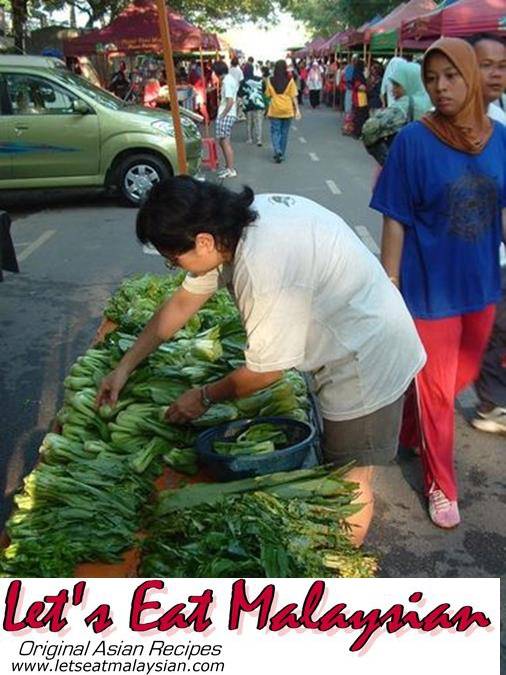
When blanching green leafy vegetables it is a good idea to add a tablespoon full of cooking oil to the water once it is boiling. Then add 2-3 pinches of sugar and salt and finally add the vegetables.
This method helps to ensure that the vegetables retain their green colour as a thin layer of oil coats the leaves and stops the colour from leeching out into the water.
Updated March 31st 2013
The Australian lifestyle with its emphasis on outdoor activities lends itself perfectly to barbeque cooking. Barbeques today are far more than a couple of steaks and sausages with onions.
Modern barbeques come in all shapes and sizes with good basic 4 burner units costing as little as $150. From there you can go all the way up to stainless steel gourmet units with built in fridge compartments costing a couple of thousand dollars.
With all this cooking technology at your fingertips it is obvious that the dishes you can cook on today's barbies are going to be a bit more sophisticated than they used to be.
Meat can be marinated in various ways before cooking. Dishes like honey soy chicken, teriyaki steak and even beef satay can be cooked to perfection on modern barbeques. With additional attachments like motorised rotisseries even suckling pig and roast duck are within most people's reach.
Some barbeques allow you to add charcoal and this helps give authentic Asian flavours to dishes like satay chicken or beef.
If you haven't managed to get too adventurous with the backyard BBQ yet then grab a good BBQ cookbook (you can even get these from many local op-shops for $1-2) and start to try out a few new recipes. One of the main things to remember when cooking with any BBQ is to control the heat properly. If you are cooking steak then you may want the heat up high to start with to sear the outside and then turn the heat back down. If you are cooking pork or chicken then the heat needs to start of low so that the meat cooks inside instead of just turning the outside to charcoal and leaving the centre raw.
When cooking on the barbeque there are a few points to remember:
-
Whatever meat you cook on your barbeque try not to allow it to burn on the outside.
-
Steak can be rare (a little undercooked) but always cook pork and chicken well so that the meat flakes a bit.
-
Sear your steak first to seal in the juices then turn the heat down.
-
Start your thickest cuts of meat off first and add thinner cuts later to avoid over cooking.
-
Get you onions cooking before any other vegetables so that they start to caramelise.
Most important of all, enjoy the freshness of the Australian outdoors, the company of friends and great tasting food.
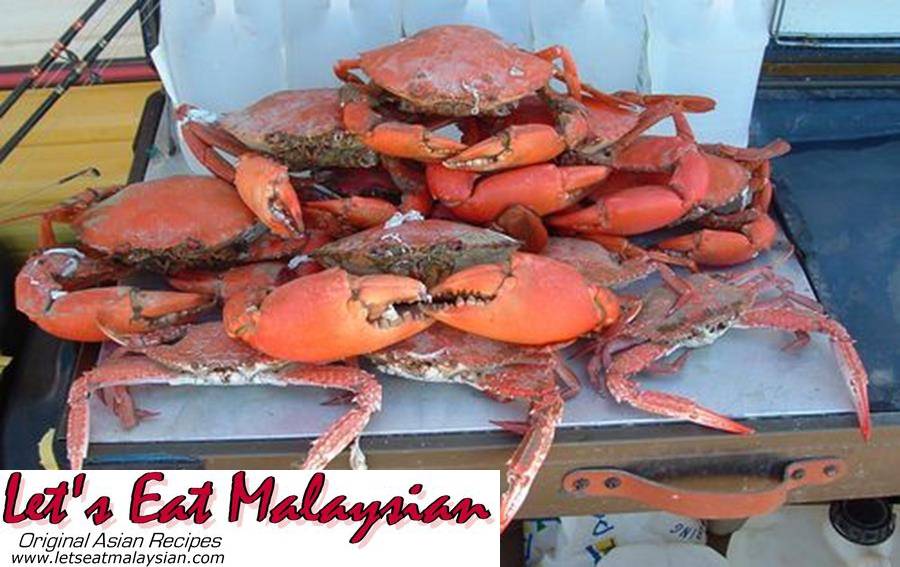
We are very fortunate in Australia to still have an abundance of seafood that anyone with the desire can go out and catch. Fish, crabs, crayfish, mussels, pipis, oysters, squid, octopus and even more exotic fare like sea urchins can be found along different stretches of our coast.
Our oceans are still very clean and it is a great joy to be able to go away for a few days and catch or gather some seafood that you can bring home and cook. The freshness is undisputed when you have just brought it in yourself and it is much more satisfying than just purchasing what you want from the local shops.
Many people here also have enough of a garden to establish a vegetable patch. This is great for a number of reasons including knowing that your vegetables are untainted by dangerous pesticides, having the freshest produce on hand when you need it and growing some more unusual vegetables that are difficult (if not impossible) to buy in the shops.
We established our vegetable gardens on little more than sand but in no time we were producing choy sum, pak choy, corn, lettuce, beetroot, celery and over 40 other varieties. We save seed each season so that there is enough to re-plant the following year and we compost all our organic waste. This means that once the basic garden is in place, the ongoing costs reduce and the rewards in terms of the best vegetable increase each year.
Related links : Fishing, Grow Your Own Veggies
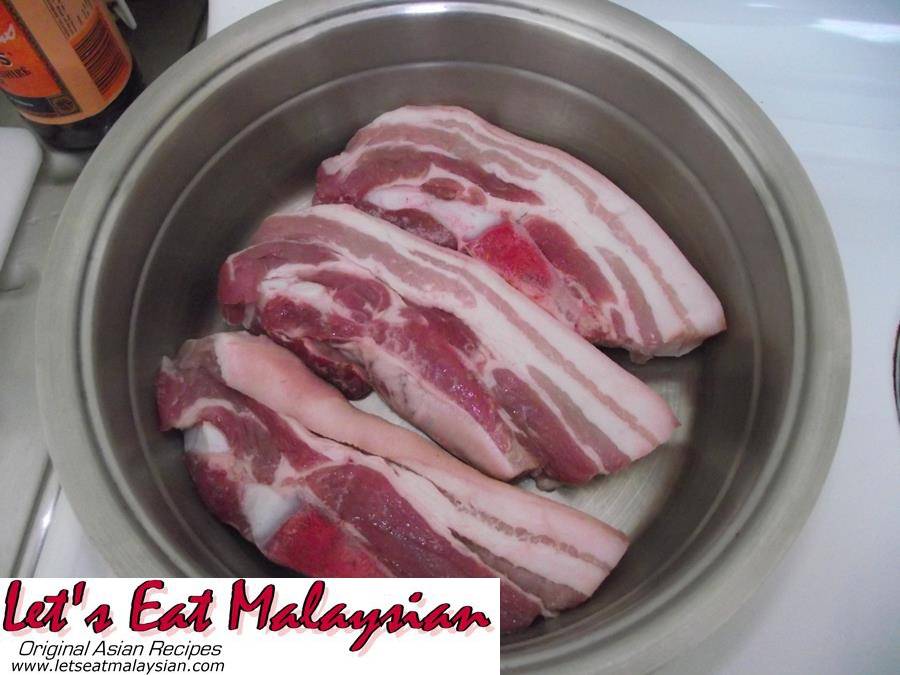
A lot of Asian restaurants use sodium bi-carb to tenderise meat (usually beef). Quite often they will use too much and they fail to wash it out properly. This leaves a horrible taste and totally ruins any dish that it effects.
A trick that I learned quite early on was to use either cornflour or tapioca flour instead of bi-carb. You only need to use a small quantity of flour (about half a teaspoon for most dishes) that is then rubbed into the raw meat and left to 'marinate' for 15-20 minutes. Unlike bi-carb, that needs to be washed away, the flour can be left on the meat during the cooking process.
Updated March 30th 2013
Malaysia and Food
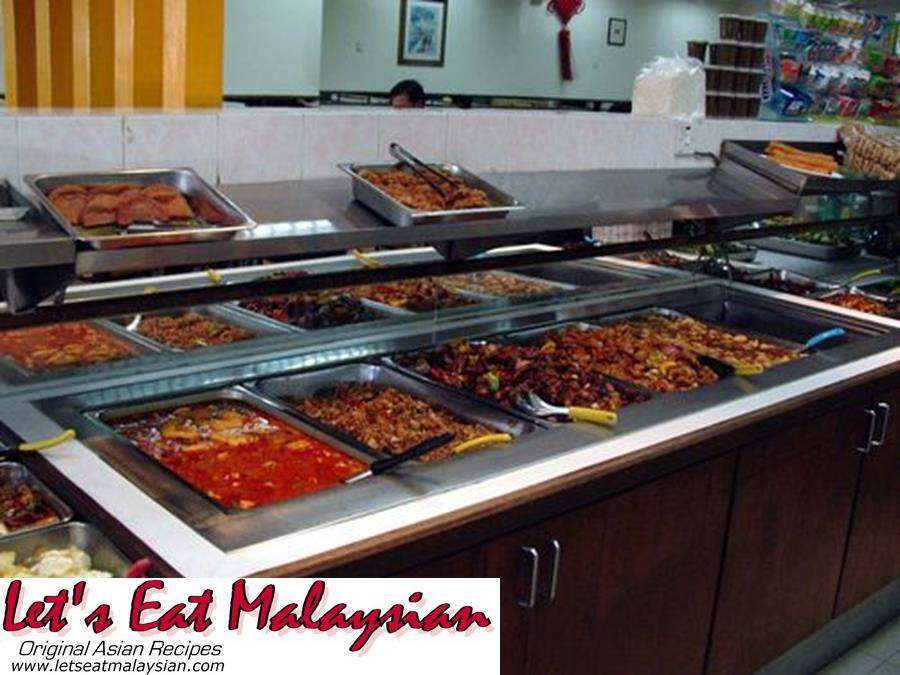
Malaysia and food are two words that belong together in the same way that strawberries and cream and bacon and eggs belong together. One without the other just isn't right.
The three main ethnic groups in Malaysia are Malay, Chinese and Indian. Each have their own way of cooking and there are many variations within those groups. Malaysia also shares a border with Thailand so there is also a strong Thai influence in cooking and dishes like Tom Yum are found in many Malaysian restaurants.
The mix of cultures has led to a rich variety of foods and an almost limitless number of dishes for diners to enjoy. If you see a group of Malaysians sitting and chatting together then you can bet that a lot of their conversation will be about food.
Travellers to Malaysia almost always comment of the food they had there, before they mention anything else. The food is very cheap compared to western countries and eating out either at the local Mamak shops or at more up-market restaurants, is always a possibility.
Using prawns to flavour dishes

Prawns are an essential ingredient in many of my recipes. Sometimes they are the main ingredient and in other dishes they are there to add flavour to a noodle, rice or vegetable dish.
When prawns are used to flavour a dish the shell is removed and the vein that runs along the back (usually this is full of sand) is removed. The prawn meat is then briefly rinsed to remove and remaining grit and then the meat is finely chopped.
The last thing to do is add about half a teaspoon of sugar and mix it through the chopped prawn meat, then leave the prawns to marinate in the sugar until they are ready to be used in the recipe. This is usually only a few minutes but it is an important step.
The prawns I like to use in all my cooking are Australian banana prawns like those shown in the photo above. They are large prawns with a good flavour and they work very well with all my recipes.
Updated March 29th 2013
